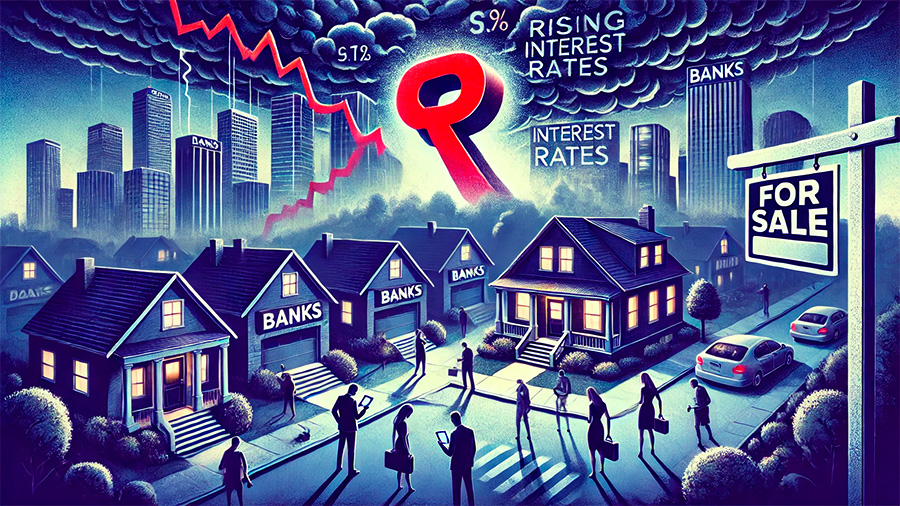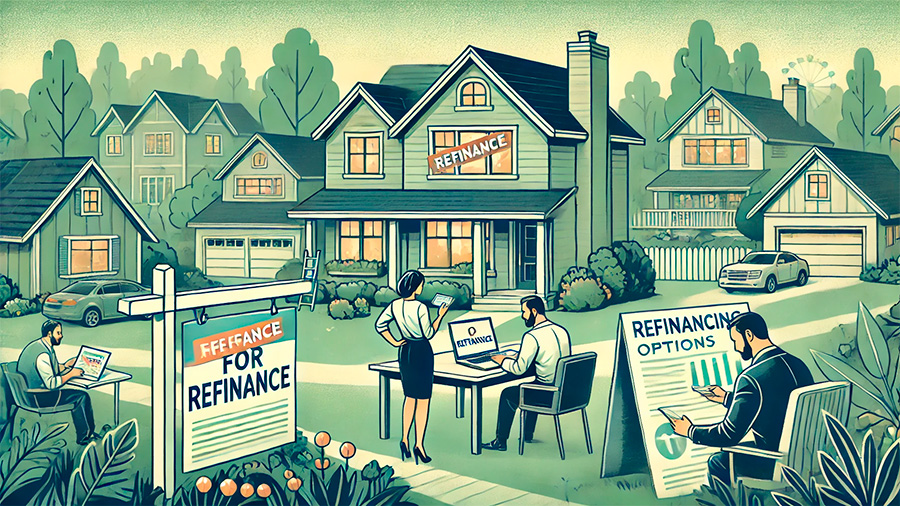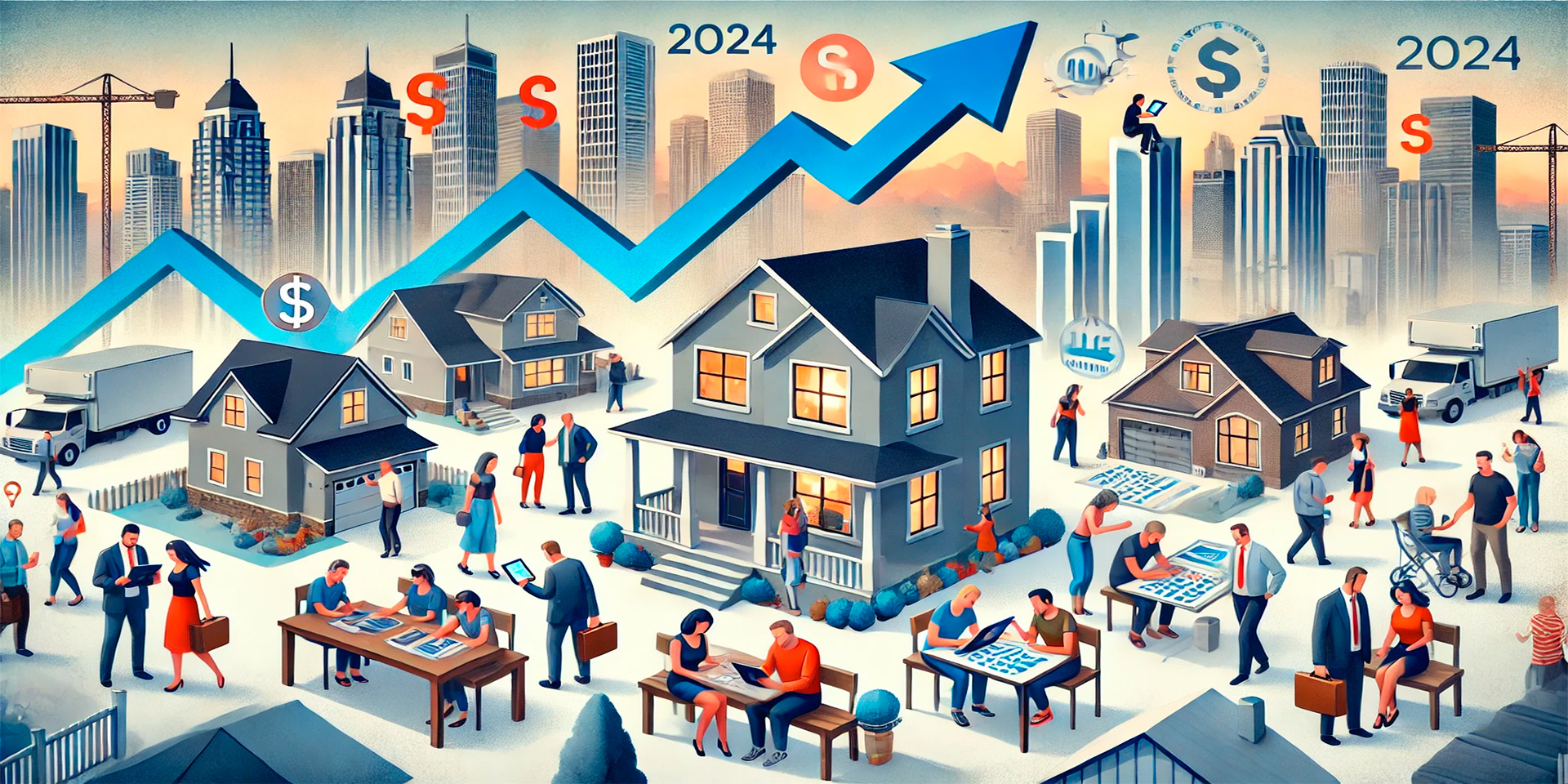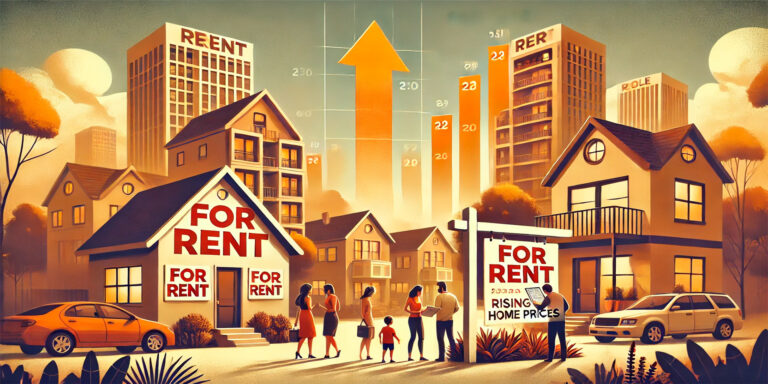Interest rates play a pivotal role in shaping the housing market, influencing everything from home affordability to buyer demand. In 2024, changes in interest rates are significantly impacting the housing market, affecting both buyers and sellers in various ways. With rising rates increasing the cost of borrowing, potential homeowners are facing higher monthly mortgage payments, which in turn affects housing demand and pricing trends. This article will explore how current interest rates are shaping the housing market in 2024 and what these changes mean for prospective buyers, investors, and homeowners.
Understanding the Connection Between Interest Rates and the Housing Market
Interest rates, particularly mortgage rates, are a critical factor in determining the overall affordability of homes. When the Federal Reserve raises or lowers interest rates, it directly impacts the rates that banks and lenders offer to consumers for mortgages. A lower interest rate makes borrowing more affordable, leading to lower monthly mortgage payments and increased demand for housing. Conversely, rising interest rates make borrowing more expensive, reducing affordability and cooling demand in the housing market.
The Role of the Federal Reserve
The Federal Reserve, also known as the Fed, is responsible for setting the federal funds rate, which is the interest rate at which banks lend money to each other. This rate indirectly influences mortgage rates. In times of economic expansion, the Fed may raise interest rates to control inflation and prevent the economy from overheating. On the other hand, during economic slowdowns, the Fed may lower rates to stimulate borrowing and spending. In 2024, the Fed’s decisions have been closely watched, as inflationary pressures have led to a steady rise in interest rates, impacting the housing market significantly.
Impact on Mortgage Rates
Mortgage rates, which are often tied to the federal funds rate, have risen steadily in 2024 as a result of the Fed’s actions. The average 30-year fixed mortgage rate, which was under 3% just a few years ago, has now climbed to over 6%. This sharp increase has made home loans more expensive for buyers, limiting affordability and reducing the number of potential homeowners who can qualify for a mortgage. Higher mortgage rates mean that buyers are paying more interest over the life of the loan, which increases the total cost of homeownership.

The Effect of Rising Interest Rates on Homebuyers
As interest rates rise, home affordability declines. This trend is having a direct impact on prospective homebuyers in 2024, making it more challenging for them to purchase homes at the prices they once could afford. Rising mortgage rates increase monthly payments, forcing buyers to reconsider their budgets or look for less expensive homes. For many, these higher costs are pushing homeownership out of reach.
Decreased Buying Power
One of the most significant effects of rising interest rates is the reduction in buying power for homebuyers. As mortgage rates increase, the amount of money a buyer can borrow without exceeding their budget decreases. For example, a buyer who could afford a $400,000 home when mortgage rates were 3% may now only be able to afford a $350,000 home with rates at 6%. This reduction in buying power forces many buyers to either lower their expectations or delay purchasing altogether.
First-Time Buyers Hit Hardest
First-time homebuyers, who often have smaller down payments and less flexibility in their budgets, are particularly affected by rising interest rates. As monthly payments increase, many first-time buyers are finding it difficult to qualify for loans or afford the homes they desire. This segment of the market is facing tough choices, including whether to continue renting, relocate to more affordable areas, or look for smaller homes that fit within their financial constraints.
Impact on Housing Demand and Pricing
The rise in interest rates is not only affecting individual buyers but is also shaping broader trends in the housing market. As borrowing becomes more expensive, demand for homes has slowed, which in turn is influencing home prices. In many markets, sellers are adjusting their expectations as the pool of qualified buyers shrinks.
Cooling Demand in Hot Markets
In recent years, many housing markets, particularly in urban and coastal areas, have experienced rapid price growth due to high demand and limited supply. However, in 2024, rising interest rates have begun to cool demand in these once-booming markets. Fewer buyers are able to afford homes at current prices, leading to slower sales and longer listing times. While demand has not evaporated entirely, the frenetic pace of bidding wars and above-asking-price offers has subsided in many areas, particularly in high-cost regions like San Francisco, New York, and Seattle.
Price Adjustments and Stabilization
As demand cools, some housing markets are experiencing price adjustments. In areas where home prices surged during the pandemic, sellers are now being forced to lower their asking prices to attract buyers. While this doesn’t necessarily mean a housing crash, it does indicate a shift toward price stabilization. Sellers who were previously able to command premium prices may now need to be more flexible with negotiations. For buyers, this cooling effect presents an opportunity to purchase homes at more reasonable prices, although rising interest rates continue to offset some of the affordability benefits.

Long-Term Homeowners and Refinancing
For current homeowners with fixed-rate mortgages, the rise in interest rates has less of an immediate impact. However, those looking to refinance or take out home equity loans are facing higher costs, which is affecting their financial decisions. In 2024, fewer homeowners are refinancing due to the higher rates, especially those who locked in low-interest rates during the pandemic.
Refinancing Becomes Less Attractive
In 2020 and 2021, many homeowners took advantage of historically low interest rates to refinance their mortgages, saving thousands of dollars over the life of their loans. However, as interest rates have risen, the incentive to refinance has diminished. Homeowners who locked in low rates are now holding onto those loans, and fewer are looking to refinance at today’s higher rates. For those who do need to refinance, the higher cost of borrowing means that any potential savings are likely reduced, making it a less attractive option overall.
Home Equity Loans and HELOCs
Homeowners who are considering tapping into their home equity through loans or home equity lines of credit (HELOCs) are also feeling the effects of rising interest rates. These loans are often tied to variable interest rates, meaning that as rates rise, so do the costs of borrowing against home equity. For homeowners, this makes it more expensive to finance renovations, pay off other debts, or cover large expenses using their home’s equity. Many are delaying these types of financial decisions or exploring alternative financing options.
Investor Behavior in the 2024 Housing Market
Rising interest rates in 2024 are also shaping investor behavior in the housing market. Real estate investors who rely on mortgage financing to purchase properties are facing higher borrowing costs, which is influencing their investment strategies. Additionally, as the rental market remains strong in many areas, some investors are shifting their focus from purchasing to renting.
Rethinking Property Investments
For real estate investors, rising interest rates mean higher mortgage payments, which can reduce profit margins on rental properties or flipping projects. As a result, many investors are becoming more cautious, carefully evaluating the potential returns before purchasing properties. Some are focusing on markets where home prices are lower or where rental demand is particularly strong, allowing them to offset the higher cost of borrowing with stable rental income.
Increased Demand for Rentals
As potential homebuyers are priced out of the housing market due to rising interest rates, the rental market remains robust. Many would-be buyers are opting to rent for longer, leading to increased demand for rental properties in 2024. Investors who already own rental properties are benefiting from this trend, as higher demand often translates into rising rents. For those looking to invest in real estate, rental properties in high-demand areas may offer a more stable return on investment in the current market climate.
Looking Ahead: The Future of the Housing Market in 2024
As interest rates continue to shape the housing market in 2024, buyers, sellers, and investors alike must adapt to the new realities of higher borrowing costs and shifting demand. While rising rates are reducing affordability for many homebuyers, they are also helping to cool overheated markets, potentially leading to more sustainable price growth in the long term. For investors and homeowners, the focus may shift toward renting and holding properties as the cost of borrowing increases.
Ultimately, the trajectory of the housing market in 2024 will depend on a variety of factors, including future Fed rate decisions, economic growth, and the ongoing supply-demand balance in the housing sector. Staying informed about these trends will help you make smart decisions in an evolving market.





